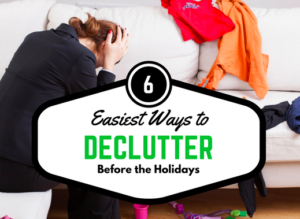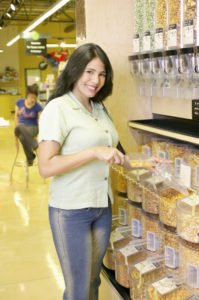With the changing of the seasons comes the changing of the clothes, the cleaning out of closets, and the charging of the credit cards. According to the Bureau of Labor Statistics 2004-2005 Consumer Expenditure Survey, women spend an average of $1,069 on clothing for themselves every year. Add another $823 to that if you shop for your husband, and several hundreds more for every kid you’re outfitting. With anywhere from $3,000 a year or more in purse power, choosing clothing that makes a difference could go a long way toward greening apparel manufacturers and the clothing industry. We can also put the three R’s to work-reduce, reuse, recycle-to improve our wardrobe’s eco-impact.
Reduce-Buy Fewer, But Higher-Quality, Clothes
Slow down. Buy fewer clothes that will last longer. The way the fashion industry works, what goes around comes back around. Beat the industry at its own game by building on your wardrobe, not trashing it.
Invest in good clothes. Buy brands that will last, even if you don’t plan to wear them every single season. You’ll save time and money-as well as resources-by not having to replace as many items every year.
Create a budget. Know how much money you can or want to spend, and track your expenditures the way you do other household items. You’ll limit the impulse buying that leads to over-consumption by becoming a master of the phrase, “It’s not in my budget.”
Reuse-Buy Gently Worn Clothes, Vintage Garments…or Swap
Buying used clothing offers another green alternative to new duds-and may ultimately conserve the most resources. Where to go?
Your neighborhood. An estimated twenty thousand resale shops offer fashion values and let you sell the clothes you never want to wear again for money you can take away or spend on other items in their stores.
Minneapolis-based Plato’s Closet offers the latest styles in name brands and discount prices. The company has opened some two hundred franchises since 1999 and planned to open thirty-five additional stores in 2007.
Crossroads Trading Co. is where shoppers can buy top-quality recycled and new fashions as well as receive cash or trade credit for items they sell to the store.
Buffalo Exchange has thirty national stores whose offerings feature designer wear, vintage, jeans, leather, great basics, and one-of-a-kind items.
You can also swap clothes with friends and family members who are as tired of their outfits as you are of yours. Host a swap party. Set as the price of admission three or four articles of clean clothing and organize the rest however you wish!
Recycle Your Clothes
Clothes and shoes take up more space than any other nondurable goods in the solid waste stream, because, says the EPA, only 16 percent of discarded clothes and shoes are recycled. Despite the best efforts of charities and thrift stores, millions of tons of clothing are wasted every year.
However, dozens of charities like Purple Heart, the Salvation Army, and Goodwill will gladly take your clothes and get them to people in need. Here are some other options:
Dress for Success. This international not-for-profit organization promotes the economic independence of disadvantaged women by providing professional attire along with job counseling. Since 1997, Dress for Success has served almost 300,000 women around the world. You can donate suits, blouses, pants, shoes, jewelry, briefcases, black tote bags, and other appropriate business apparel.
Soles 4 Souls. Providing free footwear to people in need around the world, this nonprofit organization started after the Asian tsunami in December 2004, continued in the aftermath of Hurricane Katrina, and today distributes shoes worldwide. It also partners with Dress for Success to provide career footwear.
One World Running. This Colorado-based nonprofit organization ships donated running shoes, soccer gear, and baseball equipment to athletes in Central American, Haiti, and sub-Saharan Africa.
Nike’s Reuse-A-Shoe. The program grinds up and recycles discarded shoe material to build playground mats, basketball courts, and running tracks. Visit the website to find a drop-off spot near you.
Project Rejeaneration. Del Forte Denim lets you recycle your jeans. When you no longer want them, send them back (in the bag they came in) and they’ll be recast as a new piece of clothing. As a reward for recycling, you get 10 percent off your next Del Forte purchase (or you can donate your 10 percent to the company’s Sustainable Cotton Project).












